- feeds
- popular
- recent
- reader
- about
- story
- technologies
- what is rss
- connect
- dmca
- contact
- Feed Preview China – Asian Scientist Magazine
Rising Temperatures Threaten China’s Workforce
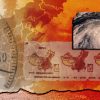
Annual heat-induced work hours losses are expected to increase by 120 percent by the end of the century in the country, study estimates.
https://www.asianscientist.com/2024/01/environment/rising-temperatures-threaten-chinas-workforce/
Celebrating Groundbreaking Science With The Asian Scientist 100

The exceptional researchers featured on the Asian Scientist 100 (2023 Edition) are pushing the boundaries of their fields and improving the lives of people and the environment we live in.
Igniting Innovation—An Interview With Richard Eu Of Eu Yan Sang International

In a rapid transition from traditional medical halls to numerous international outlets and an online store, embracing innovation has catapulted Eu Yan Sang into a household name in traditional Ch...
High-Protein Diets Could Help Prevent Post-Diet Weight Regain

Researchers have discovered eating a high-protein diet after a restrictive diet could help prevent weight regain by supressing the presence of gut bacteria responsible for fat absorption.
Tech That Gives Back

As natural disasters, climate change and health emergencies continue to affect communities in Asia, people and institutions turn to tech to provide help.
https://www.asianscientist.com/2022/11/print/tech-that-gives-back/
Science Superstars On The Asian Scientist 100
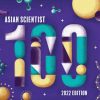
From exploring new galaxies to addressing humanity’s greatest challenges, the diverse honorees listed on the Asian Scientist 100 (2022 edition) represent the best and brightest minds in Asian S...
https://www.asianscientist.com/2022/05/topnews/science-superstars-on-the-asian-scientist-100/
MGI Unleashes The Power Of Precision Medicine

At the forefront of gene sequencing technology, MGI is transforming the healthcare ecosystem.
eDNA: Emerging Technology For Biodiversity Conservation

Conservation researchers in Asia are increasingly using environmental DNA technology. But it needs to be refined for better conservation efforts.
Owls That Ventured Out In The Sun
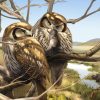
Fossil records unearthed in China suggest that a now-extinct owl species hunted during the day rather than at night.
https://www.asianscientist.com/2022/04/in-the-lab/owl-fossil-daytime-miosurnia-diurna/
A Taste For Change
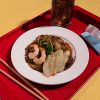
Asia boasts some of the world’s best dishes, but its relationship with food goes beyond taste. Here’s how researchers are building a healthy and sustainable food future, while preserving the ...
https://www.asianscientist.com/2022/04/print/a-taste-for-change/
Fighting Food Fraud

To intercept future food scandals in Asia and the world, innovations like blockchain and artificial intelligence could prevent fraud and reduce anxiety about what’s really on our plates.
https://www.asianscientist.com/2022/03/print/fighting-food-fraud/
Powering Through The Pandemic With Supercomputers

By performing trillions of calculations per second, supercomputers are accelerating COVID-19 diagnosis and the development of test kits and vaccines to help scientists combat the pandemic.
https://www.asianscientist.com/2022/03/print/powering-through-the-pandemic-with-supercomputers/
Averting Asia’s Water Crisis

Through high-speed, high-resolution exascale computing, researchers and citizen scientists are tackling water stress across Asia by discovering better ways to treat water and monitor its flow.
https://www.asianscientist.com/2022/03/print/asia-water-crisis-exascale-computing/
Women Wunderkinds

To celebrate this year’s International Day of Women and Girls in Science, we take a look at eight shining examples of scientific excellence in Asia.
https://www.asianscientist.com/2022/02/features/women-wunderkinds-women-and-girls-in-science/
A Dino Locked Inside A Bird Skull

A tiny bird skull uncovered in China provides clues to early birds’ jaws sharing similar functions with their dinosaur ancestors than modern birds.
https://www.asianscientist.com/2022/01/in-the-lab/dinosaur-fossil-bird-skull-tyrannosaurus-rex/
Ozone Pollution Threatens Asia’s Food Security

Ozone pollution has been linked with about US$63 billion in annual crop production losses, slashing wheat, rice and maize yield in East Asia.
https://www.asianscientist.com/2022/01/in-the-lab/ozone-emission-exposure-pollution-crop-loss/
The Meaty Culprits Behind Air Pollution-Linked Deaths

Shifting to a less meat-intensive diet could reduce air pollution and avoid 75,000 annual premature deaths in China.
https://www.asianscientist.com/2022/01/in-the-lab/meat-diet-air-pollution-premature-deaths/
Asian Scientist Magazine’s 2021 Roundup
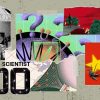
Here are 10 of Asian Scientist Magazine’s top stories in 2021, highlighting scientific advances in diverse domains from COVID-19 to climate change.
Two Sides Of The Same Plant: Mismatched Responses To Warming

Climate warming induces different responses in plant growth patterns above and below ground, potentially disrupting ecosystem stability.
Pretty Grape: How Grape Seed Extract Makes Mice Live Longer

Research from China demonstrates that a flavonoid extracted from grape seeds increases the lifespan of old mice by killing cells that promote aging.
https://www.asianscientist.com/2021/12/in-the-lab/grape-seed-extract-anti-aging-in-mice/
Mining Microalgae To Reduce Carbon Emissions
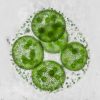
A new machine learning-powered method is speeding up how scientists study microalgal cell factories and their carbon cycling functions.
Digging Up The Genetic Origins Of Inner Asia’s Mummies

Genomic analysis of the Tarim Basin mummies has revealed their origins as a local group in China's Xinjiang region, rather than a migratory population.
https://www.asianscientist.com/2021/11/in-the-lab/genome-ancestry-tarim-basin-mummies-asia/
The Explosive Truth Behind China’s Dynastic Collapses

Sudden climatic shocks caused by volcanic eruptions contributed to the downfall of China's dynasties, especially when combined with pre-existing societal instability.
https://www.asianscientist.com/2021/11/in-the-lab/volcanic-eruptions-collapse-dynasty-china/
Shining Light On Why Beetles Glow
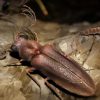
The discovery of a a 99 million year old amber fossil from Myanmar offers insight into how and why beetles began to glow.
https://www.asianscientist.com/2021/11/in-the-lab/fossil-bioluminescence-beetles-evolution/
Signs of Supereruptions: The Magma Beneath Toba

By combining geologic dating with computer modeling, scientists have discovered that constant magma build-up fueled Toba’s supereruptions, the largest in Earth’s history.
https://www.asianscientist.com/2021/11/in-the-lab/toba-volcano-eruption-modeling-magma-indonesia/
An Afternoon Nap A Day May Keep Dementia At Bay

Afternoon napping is linked to better mental agility, locational awareness, verbal fluency and working memory, according to researchers from China.
https://www.asianscientist.com/2021/11/health/afternoon-napping-mental-agility/
Storing Big Data In A Tiny Space

By combining graphene oxide with upconversion nanoparticles, researchers have found a way to store large amounts of data on an optical disk.
https://www.asianscientist.com/2021/10/tech/optical-disk-big-data/
Hu Hailan Wins 2022 L’Oréal-UNESCO For Women In Science Award

For her research on the neurobiology of depression, Professor Hu Hailan was named among the five 2022 L’Oréal-UNESCO For Women In Science awardees.
https://www.asianscientist.com/2021/10/academia/loreal-unesco-for-women-in-science-hu-hailan-asia/
Under Quantum Lock And Key

China leads the world in quantum key distribution (QKD) technology, which promises to lay the foundations for an ‘unhackable’ quantum internet.
https://www.asianscientist.com/2021/10/print/china-quantum-key-distribution/
All In The Genes
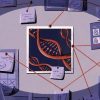
Precision medicine could reveal the secrets of Asia’s collective DNA without carrying the risks of consumer genetic testing. Here’s how.
https://www.asianscientist.com/2021/09/print/dna-testing-precision-medicine-asia/
